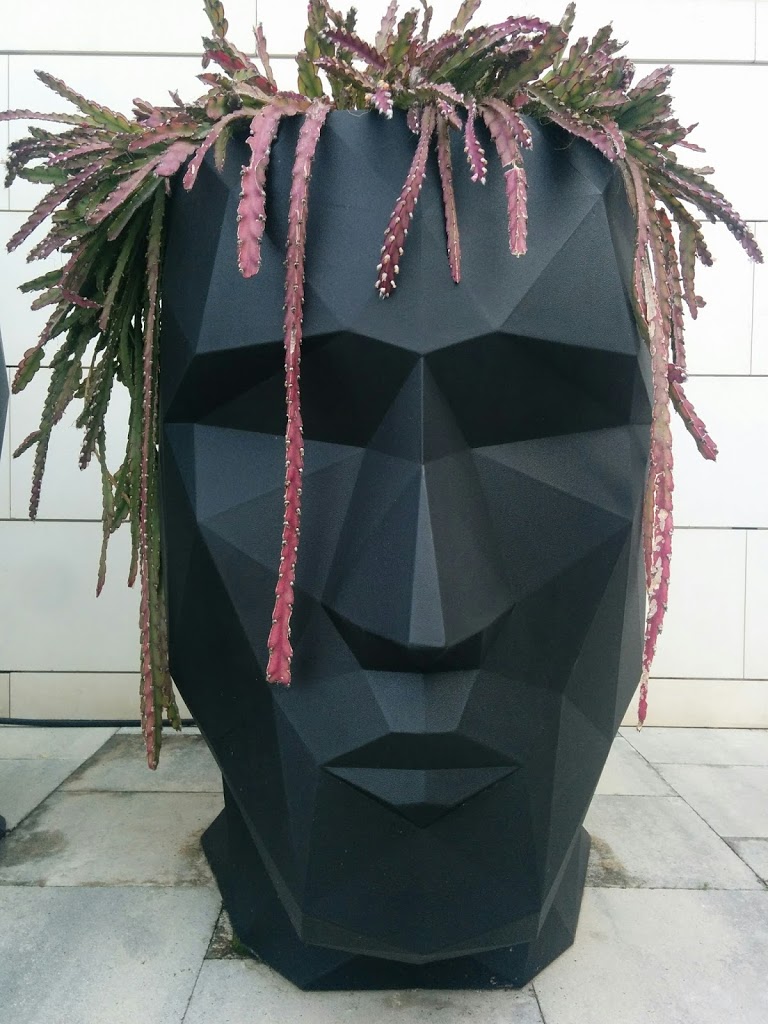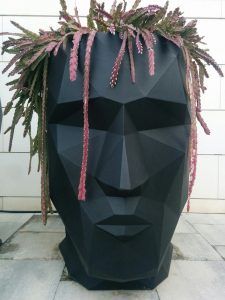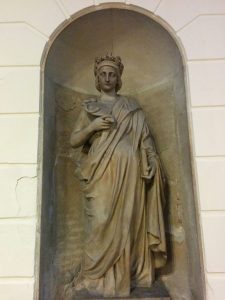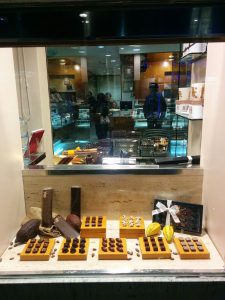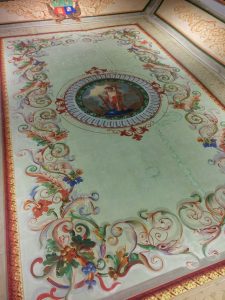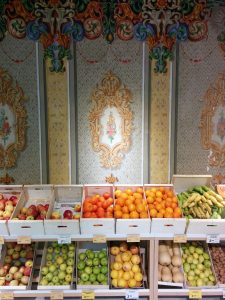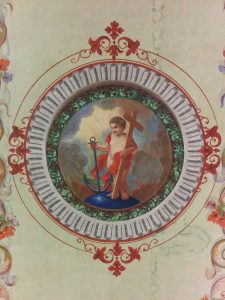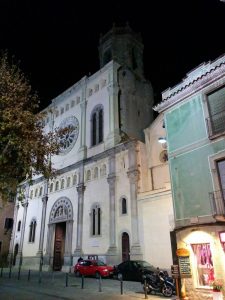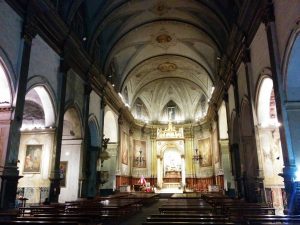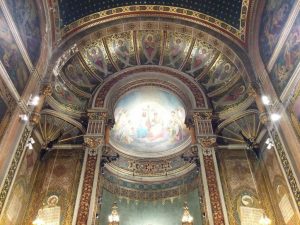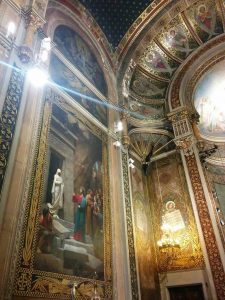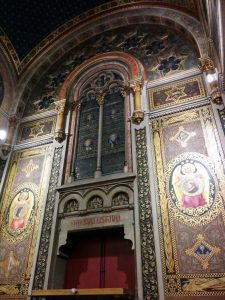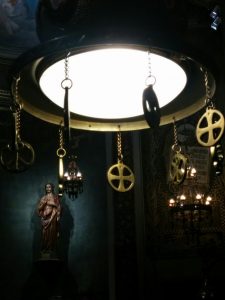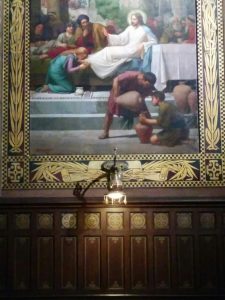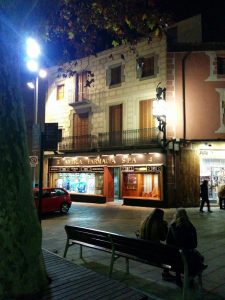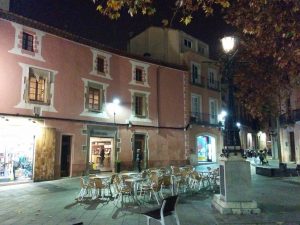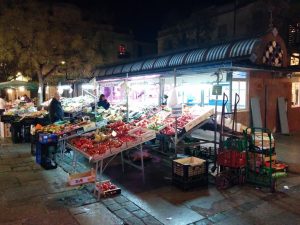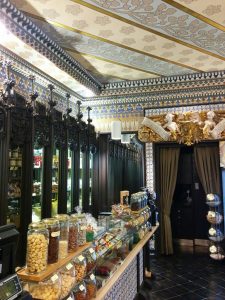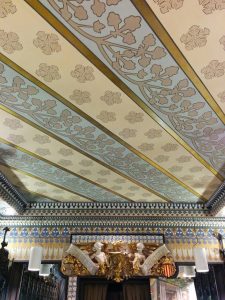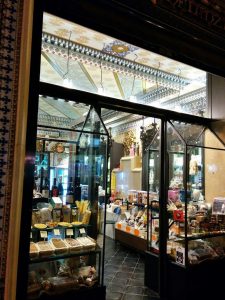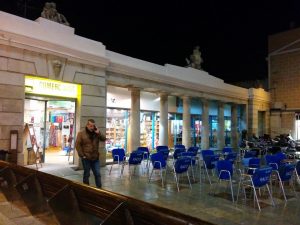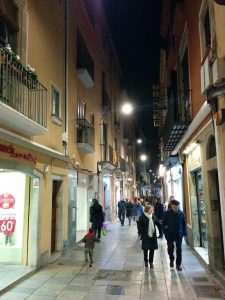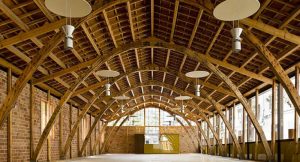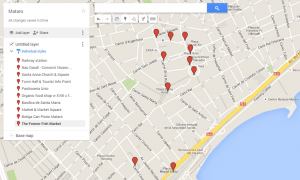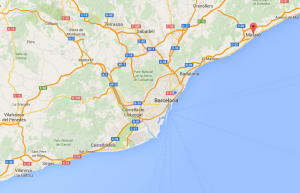Start With “i”
As soon as you start your stroll you realize that it is a small town with a provincial touch, where everything is at a stretch of a hand, where people are friendly, ready to help you and time flows at a slower pace. I sort of like that. My first stop was at the tourist promotion office on the main walking street (La Riera). After living over a year in Barcelona, the warm and friendly approach of the lady working there made me wow. She listened to my interests and needs and immediately gave me 4 maps and a list of the best restaurants. Here you can get a free audio-guide or if you pop in during the weekend you can join one of the many thematic free guided tours of the town.
The Sweet Street
The La Riera looked like an Italian corso where high window shops blend well with beauty centres, pastry shops and chocolateries. Unio has a slight 70s, retro style but the chocolate pralines with almonds, hazelnuts or truffles are to die for!
Baroque Fruits
Leaving behind the swanning scene of the town, I plunged into the heart of the old town. Suddenly the Turn-of-the-Century and Classicist architecture peels off into Baroque. An organic food shop in Carrer Nou street makes me say “Gosh!”: above the beautifully displayed organic food the walls and ceiling are covered with XVIII century original frescoes! I think it was the most beautiful food shop in the world I have ever seen in my life!
The Religion of Modernismo
At the end of this charismatic street opens a triangular piazza where among the old lamps raises the Basilica of Santa Maria. The interior is elegantly illuminated and like a veiled voice invites you walk in and reflect on the beauties of life. Not for long as behind a Vth century early christian tomb stone there’s the entry to a real Paradise: Capilla de Sacramento decorated in beautiful blend of Byzantine and Art Nouveau styles (1892)! Everything here seems to be so modern, gentle, vegetal and done with such a refined taste – from the lights, the golden mosaics, the powerful paintings to the mosaic floor finished in 1903.
Little Drink in Little Square
On your left opens the “Market of the Big Square” (Mercat de la Placa Gran), a picturesque little square surrounded by classicist facades of early 1800s and in the middle there’s a miniature market with two faces of stalls. The cosy, human size of the square and market invites you to sit down and have a bite and sip a drink.
Art Nouveau & Treats
Once you fueled your batteries stop for a sweet bite in the lavish “La Confianza” shop (1896) built by the Mataró born architect Puig i Cadafalch. He was considered the last Modernista (Art Nouveau) architect and among his landmark projects in Barcelona are Plaza de España and Casa Amatller situated to the left of Gaudi’s Casa Batlló.
The Italian Connection
The Beginning of Gaudi
Apart the beach, the sailing harbour, the technology university campus, Mataró has interesting Roman ruins, a textile museum and a modern art collection hosted in Gaudi’s first project: the Gaudi Nave (Nau Gaudi). While still a student, due to his personal contacts with the social movement leaders from Mataró, Gaudi decides to do something innovative for the local workers’ association, a nave with wooden arches that will become the germ of his future projects. If you want, this nave has been the Big Bang of a new constellation and architectural movement.

